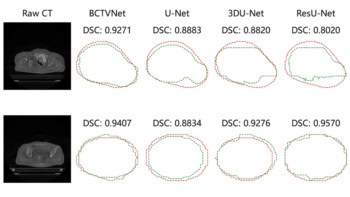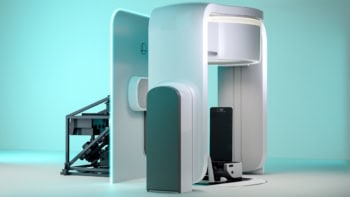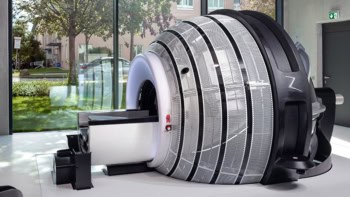A round-up of the latest international patent applications in radiation therapy.
Interweaving low and high doses reduces radiation damage
Radiation Barrier, an adaptive immunotherapy company, has published details of a method for preventing damage to healthy cells surrounding a tumour during radiotherapy (WO/2018/126277). The process involves irradiating such cells with low-dose radiation, which initiates a protective cellular response in the healthy cells and prevents later damage by radiation. It also generates an immune response against neoplastic cells. The filing describes a scheme in which the low-dose radiation is interspersed with high-dose sessions, which themselves are varied through the weekly schedule.
Scattering model improves ion-based therapy planning
RaySearch Laboratories has proposed a method for modelling multiple scattering in ion-based radiotherapy treatment planning (WO/2018/115114). The approach first uses a Coulomb scattering model to determine multiple elastic scattering of ions for scattering angles in a first angular interval with an upper limit at a selected cut-off angle. Next, it determines multiple elastic scattering of ions for a second angular interval with a lower limit at a selected cut-off angle. The system then determines the scattering for angles in a range comprising at least part of the first and second angular intervals, based on the obtained results. The method avoids the double counting of particles at large scattering angles that occurs when using conventional methods, aiming to more accurately reflect the scattering of protons and other ions in ion-based radiotherapy.
MLC-based device lines up for minibeam radiotherapy
A collaboration from CNRS, University of Paris-Sud and Paris Diderot University has invented a system for delivering minibeam radiotherapy at a lower cost device than existing minibeam generators (WO/2018/091280). The device incorporates a multileaf collimator with an array of alternating leaves and slits extending in a longitudinal direction (from an entrance plane of the array toward an exit plane). It also includes a source for emitting an incident electromagnetic beam or beam of subatomic particles. The source emits the beam in the direction of the entrance plane of the array. The multileaf collimator is arranged to create an arrangement of beams that form alternating high-energy and lower-energy lines, suitable for minibeam radiotherapy.
Low-intensity focused ultrasound tackles dementia
A low-intensity focused ultrasound pulsation device for treating degenerative dementia is described by BrainSonix (WO/2018/112269). The device works by directing the focal point of an ultrasonic transducer beam at a target area of the brain, to promote removal of substances that accumulate in the interstitial pathways that are in part responsible for degenerative dementia. In one example, the target area is the hippocampus and the degenerative dementia is Alzheimer’s disease. The ultrasonic beam can stimulate brain tissue at a frequency corresponding to a naturally occurring deep-sleep burst frequency of neurons. The subsequent astrocyte activation patterns drive a process responsible for brain solute disposal. For example, the transducer may generate a burst frequency of 1-4 Hz to stimulate deep-sleep brain functions that help remove amyloid plaque.
Compact gantry delivers high-quality proton beam
Varian has developed a compact, lightweight proton therapy gantry with a source-to-axis distance (SAD) of less than 2 m (WO/2018/125627). This small SAD reduces the requirements on the maximum magnetic fields generated by the bend magnets in the gantry beamline, enabling the use of lightweight bend magnets. The components in the gantry beamline are optimized to achieve a beam spot size of approximately 4 mm sigma or less, through a pencil-beam scanning nozzle downstream of the final bending magnet. In addition, the proton therapy system is configured to operate at a maximum beam energy of 220-230 MeV. According to the filing, the gantry can be configured to rotate 360° and maintain treatment precision, thus delivering the same treatment quality and workflow efficiency as much larger and more expensive conventional proton systems.
PET guides radiation therapy
RefleXion Medical has designed radiotherapy systems and methods for emission-guided high-energy photon delivery (WO/2018/093933). In emission-guided radiation therapy, gamma rays from markers or tracers that are localized to tumour regions are detected and used to direct radiation to the tumour. The treatment systems comprise: a gantry with a rotatable ring coupled to a stationary frame via a rotating mechanism, such that the rotatable ring rotates up to about 70 RPM; a radiation source (such as a MV X-ray source, for example) mounted on the rotatable ring; and one or more PET detectors mounted on the rotatable ring.



